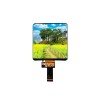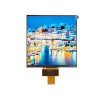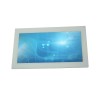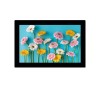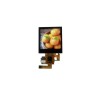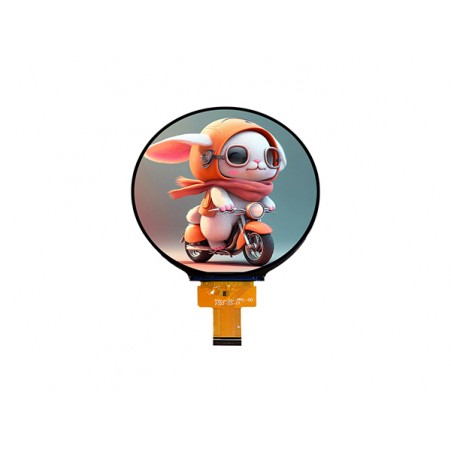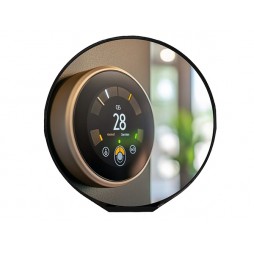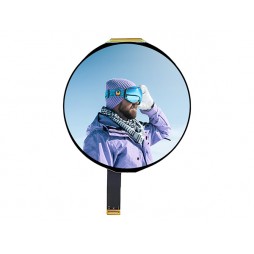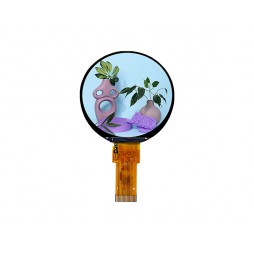Products
Hot Product
4inch 720*720 round lcd screen tft 500nits MIPI IPS
4inch LCD normally Black 720xRGBx720 MIPI interface lcd display module for POS/White Goods
Product advantages: high brightnesslcd display,round lcd display
LCM Model:R40005-720720MT
LCD Size:4.0inch
LCD Resolution:720x720
LCD Interface:MIPI
Display view angle:IPS
Display brightness:500nits
Touch Screen:Optional capacitive touch
4inch LCD Display 720x720 tft lcd display parameters:
|
Item |
Specification |
Unit |
|
LCD screen size |
4.0 |
inch |
|
Display Mode |
Normally Black |
-- |
|
Resolution |
720x(RGB)x720 |
Pixel |
|
Pixel arrangement |
RGB Vertical Stripe |
|
|
Viewing angle |
Full Viewing (IPS) |
- |
|
TP-Module Outline |
/ |
|
|
LCM Module Outline |
105.6 (W) ×109.87 (H) ×2.15(T) |
mm |
|
LCD AA |
101.52(W)×101.52(H) |
mm |
|
Display Colors |
16.7M |
colors |
|
Driver IC |
/ |
- |
|
LCD Interface |
MIPI |
-- |
|
Luminance |
500 |
cd/㎡ |
|
Backlight Arrangement |
White LED |
-- |
|
Capacitive Touch panel |
Option |
|
|
Touch IC |
/ |
-- |
|
Touch point |
Multi-point |
-- |
|
Touch structure |
GFF |
-- |
|
Touch Interface |
IIC |
-- |
|
Cover lens |
GLASS |
mm |
|
Surface hardness |
≧6H |
-- |
|
Cover lens Colors |
Black |
-- |
|
Weight (LCM/TP+LCM) |
/ |
kg |
|
Operating Temperature |
-20℃~ +70℃ |
Deg.c |
|
Storage Temperature |
-30℃~ +80℃ |
Deg.c |
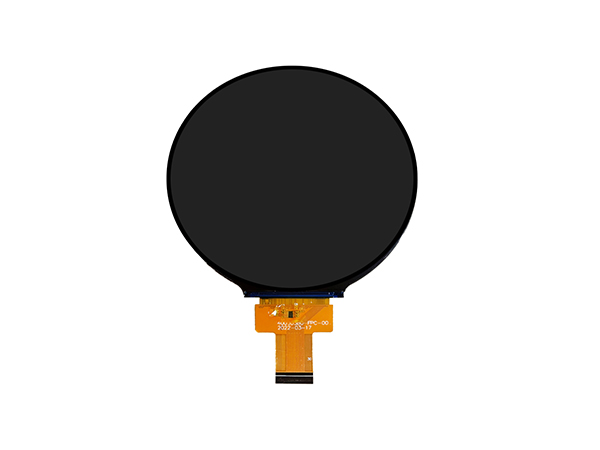
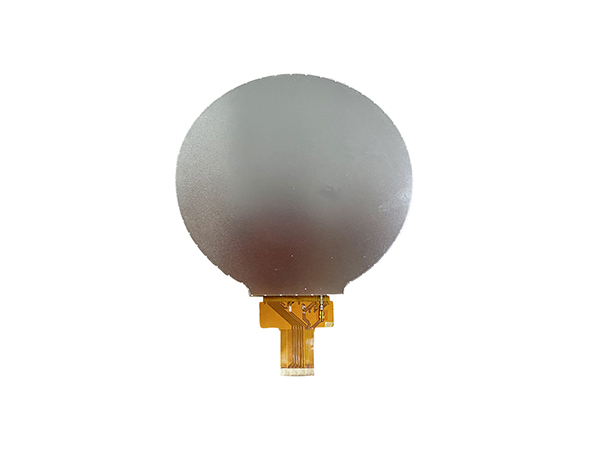
Is TFT LCD better than Amoled?
TFT LCD (Thin-Film Transistor Liquid Crystal Display)
Technology: Uses liquid crystals combined with a thin-film transistor for precise control of pixels.Pros:
Cost-Effective: Generally cheaper to produce.
Color Accuracy: Good color reproduction and sharpness.
Brightness: Generally high brightness levels, which can be advantageous in well-lit environments.
Cons:
Limited Contrast: Lower contrast ratios compared to AMOLED.
Viewing Angles: Colors and brightness can shift when viewed from different angles.
AMOLED (Active Matrix Organic Light Emitting Diodes)
Technology: Each pixel is made of organic compounds that emit light when an electric current is applied.Pros:
Vivid Colors: Superior color saturation and contrast.
Blacker Blacks: True black levels due to individual pixel control.
Energy Efficiency: More efficient when displaying darker images.
Cons:
Cost: Typically more expensive to produce.
Burn-In: Potential for image retention or burn-in issues over time.
TFT LCD vs. AMOLED
1. Color and Contrast
TFT LCD: Offers decent color accuracy but struggles with deep blacks and high contrast ratios.AMOLED: Excels with vibrant colors and deep blacks, thanks to its pixel-level lighting.
2. Viewing Angles
TFT LCD: Color and brightness can shift noticeably when viewed from an angle.AMOLED: Maintains consistent color and brightness from various angles.
3. Power Efficiency
TFT LCD: Consumes a consistent amount of power regardless of the displayed content.AMOLED: More energy-efficient with dark backgrounds due to its pixel-level lighting control.
4. Longevity
TFT LCD: Generally has a longer lifespan with consistent performance over time.
AMOLED: Can suffer from burn-in and color degradation over extended use.
Which is Better for You?
The choice between TFT LCD and AMOLED largely depends on your needs and preferences:For Budget-Friendly Options: TFT LCD is often the go-to due to its lower cost and reliable performance.
For Stunning Visuals: AMOLED stands out with its superior color quality and contrast, making it ideal for those who prioritize display quality.


